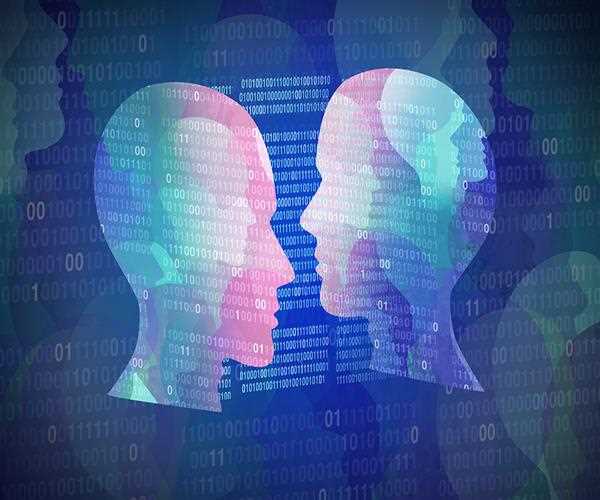Search here

03-Aug-2023 , Updated on 8/4/2023 12:07:26 AM
AI news anchor and future of journalism
Highlights
- AI-powered news anchors are virtual personas created using advanced natural language processing (NLP) and deep learning techniques.
- They are designed to read news articles and reports in a natural and human-like manner, mimicking the tone, intonation, and facial expressions of real human anchors.
- AI news anchors can work 24/7, delivering consistent and uninterrupted news coverage without the need for breaks or sleep.
- They can be localized to various languages and accents, expanding the reach of news delivery to a global audience.
- AI news anchors can process and present information rapidly, potentially reducing the time lag between events and their reporting.
- They might enhance accessibility by catering to people with hearing or visual impairments through customizable text-to-speech features and subtitles.
- Concerns regarding the technology include the potential loss of jobs for human news anchors and the risk of spreading misinformation if the AI misinterprets or misreads information.
In the ever-evolving landscape of technology and media, artificial intelligence (AI) has emerged as a transformative force that is reshaping industries and redefining human experiences. One of the most prominent and intriguing applications of AI is in the realm of journalism, where AI-powered news anchors are becoming increasingly prevalent.
These digital personalities are capable of delivering news content with human-like accuracy and consistency, raising critical questions about the future of journalism, the role of human news anchors, and the ethical implications of AI-driven reporting.
AI news anchors, also known as virtual news presenters, are computer-generated characters or avatars equipped with advanced natural language processing and speech synthesis capabilities.
These AI anchors are designed to read news scripts, mimic human expressions, and present information in a manner that closely resembles traditional news broadcasts.
This technology is powered by machine learning algorithms that analyze large datasets of human news anchors to replicate their speech patterns, gestures, and facial expressions.
As a result, AI news anchors have the potential to deliver news reports around the clock, without the need for breaks or rest, and can be easily customized to speak multiple languages or adapt to different broadcasting styles.

The rise of AI news anchors has sparked debates about the future of journalism and the role of human journalists in an AI-driven world.
On one hand, proponents argue that AI news anchors offer several advantages, including the ability to disseminate news rapidly, reduce production costs, and enhance accessibility for audiences with diverse language preferences or disabilities.
AI news anchors can tirelessly cover breaking news and deliver consistent presentations, ensuring that viewers receive information promptly and reliably. This has particular significance in an era where news consumption is shifting towards digital platforms and real-time updates are paramount.
However, concerns about the implications of AI news anchors for human journalists and the quality of news reporting have also been raised.
Critics worry that the introduction of AI news anchors might lead to the displacement of human professionals, potentially resulting in job losses and a decline in journalistic integrity.
The unique skills of human journalists, such as investigative research, critical analysis, and empathetic storytelling, are difficult for AI to replicate.
While AI can efficiently generate news reports based on data and predefined scripts, it may struggle to capture the nuances of human emotions , cultural sensitivities, and the ethical considerations inherent in journalism.
Furthermore, the increasing reliance on AI-generated news content could exacerbate issues related to misinformation and fake news. AI algorithms are only as good as the data they are trained on, and they might inadvertently perpetuate biases or inaccuracies present in the training data.
Without human oversight and editorial judgment, AI news anchors could inadvertently spread misleading or false information, undermining the credibility and trustworthiness of journalism as a whole. Maintaining a balance between AI-driven efficiency and human editorial intervention is a delicate challenge that the industry must address.
Ethical considerations surrounding AI news anchors extend beyond accuracy and reliability. The very nature of AI-generated content blurs the lines between authenticity and artificiality, raising questions about transparency and disclosure. Audiences have the right to know whether they are interacting with a human anchor or an AI-driven persona.
Full transparency in labeling AI-generated content can help audiences make informed decisions about the sources of their news and foster trust in the media landscape.
Moreover, the advent of AI news anchors invites us to contemplate the broader implications of AI on society, including its potential impact on the nature of public discourse and democratic participation.
As AI increasingly becomes a mediator of information, it becomes crucial to ensure that access to diverse viewpoints and independent journalism remains a cornerstone of a healthy democracy.
Striking the right balance between automated news delivery and human journalistic expertise is imperative to avoid creating information silos and echo chambers that limit exposure to a wide range of perspectives.
In navigating the complex terrain of AI news anchors, media organizations and journalists face a twofold challenge- embracing technological advancements while upholding the principles of responsible journalism.
Rather than viewing AI as a replacement for human journalists, it should be seen as a tool that complements their abilities.
By harnessing AI's capabilities, journalists can automate routine tasks such as data analysis and fact-checking, allowing them to focus on more intricate aspects of reporting that require human intuition and empathy.
Collaboration between AI and human journalists has the potential to elevate the quality of news coverage. AI can assist in identifying emerging trends, analyzing vast amounts of data, and even suggesting potential angles for investigative pieces.
Human journalists, on the other hand, can provide context, ethical judgement, and the human touch that is essential for impactful storytelling. This hybrid approach leverages the strengths of both AI and humans to produce comprehensive, accurate, and thought-provoking journalism.
Final words-
The advent of AI news anchors represents a transformative juncture in the field of journalism.
While AI-driven technology offers unprecedented opportunities for rapid news dissemination and accessibility, it also poses challenges related to accuracy, transparency, and the future of human journalists.
The future of journalism lies in striking a harmonious balance between the efficiency of AI and the expertise of human journalists.
By embracing AI as a tool rather than a replacement, media organizations can harness its potential to enhance news delivery, engage audiences, and contribute to a more informed and participatory society. As technology continues to evolve, the ethical and practical considerations surrounding AI news anchors will undoubtedly shape the trajectory of journalism and influence the way we consume and interact with news in the years to come.

SEO and Content Writer
I am Drishan vig. I used to write blogs, articles, and stories in a way that entices the audience. I assure you that consistency, style, and tone must be met while writing the content. Working with the clients like bfc, varthana, ITC hotels, indusind, mumpa, mollydolly etc. has made me realized that writing content is not enough but doing seo is the first thing for it.
Join Our Newsletter
Subscribe to our newsletter to receive emails about new views posts, releases and updates.
Copyright 2010 - 2025 MindStick Software Pvt. Ltd. All Rights Reserved Privacy Policy | Terms & Conditions | Cookie Policy